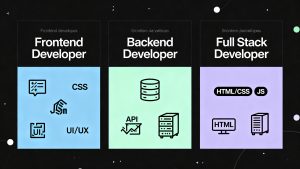Artificial intelligence has rapidly shifted from a niche research field to a transformative force in everyday technology. As AI adoption accelerates, organizations of all sizes are reimagining their strategies to stay ahead. The question is no longer whether AI will impact your business, but how to harness its potential to maintain a competitive advantage.
The Acceleration of AI Transformation
The pace of AI innovation is unprecedented. While the mobile revolution took years to reshape the world, today’s AI breakthroughs are measured in months. For example, ChatGPT reached 100 million users within three months of launch. New models from OpenAI, Google, Anthropic, and Meta are emerging at a rapid clip, fundamentally disrupting the tech landscape.
This acceleration demands that every organization reassess its position and find new ways to integrate AI into its core operations. The focus is not on following fleeting trends, but on understanding the seismic shifts AI brings and adapting accordingly.
Developing an AI Strategy: Lessons from Industry Leaders
Leading companies have faced the challenge of defining their role in the AI era. The most successful have built on their existing strengths, integrating AI in ways that feel natural to their business models. For example, a company specializing in web frameworks and application infrastructure might:
- Launch an AI SDK to empower developers to build JavaScript-based AI applications.
- Develop tools that convert natural language prompts into user interfaces, enabling rapid prototyping and full-stack development.
The key takeaway: organizations should enhance their core offerings with AI, rather than reinventing themselves entirely. By doing so, they create solutions that are authentic, impactful, and sustainable.
The New AI Engineering Paradigm
AI development has undergone a dramatic transformation. What once required advanced degrees and specialized infrastructure is now accessible to any developer with basic programming skills. The shift can be summarized as follows:
| The Old Way (Software 1.0) | The New Way (AI Revolution) |
|---|---|
| Build in Python, as taught in academia | Use familiar languages like TypeScript |
| Set up infrastructure before coding | Prioritize frontend and user experience |
| Train small, custom models | Leverage large foundation models as a service |
| Spend months or years on training | Prompt models instead of training from scratch |
| Limited to PhDs and specialists | Accessible to anyone who can call an API |
| Long development cycles | Ship products in days or weeks |
The barrier to entry has never been lower. The emphasis now is on launching minimum viable products, gathering feedback, and iterating quickly.
Competing with Tech Giants in AI
Many businesses assume they cannot compete with AI leaders like OpenAI, Google, or Microsoft. However, three key assets can give any company a unique edge:
- Exclusive Data: Proprietary information—such as customer data or domain-specific knowledge—enables organizations to build AI solutions tailored to their unique context.
- Agile Feedback Cycles: Unlike tech giants, smaller businesses can implement, test, and refine AI applications at a much faster pace.
- Domain Expertise: Deep industry knowledge allows companies to solve complex problems that generic AI models cannot address.
By leveraging these strengths, organizations can create AI-powered products that large providers cannot easily replicate.
The AI Optimization Cycle
Modern AI development is inherently iterative. The recommended approach is:
- Start with a Functional Solution: Even if initial implementations are costly or slow, prioritize getting a working product.
- Ship Early: Launch quickly to collect real user data and feedback.
- Optimize Gradually: Move from expensive, cutting-edge models to more cost-effective options as the product matures.
- Test and Evaluate: Use rigorous evaluation techniques to ensure performance remains high.
- Reduce Costs: Employ strategies like fine-tuning to further optimize efficiency.
This cycle makes sophisticated AI accessible to businesses of all sizes.
Building Powerful AI Applications with Existing Components
Modern AI SDKs simplify the integration of AI into applications. Developers can experiment with various models and switch between them with minimal code changes. For instance, functions like generateText allow anyone familiar with APIs to leverage AI capabilities.
The real power emerges when AI is embedded within the core architecture of an application, rather than added as a conversational layer. This deep integration enables AI to interact directly with component systems, data layers, and business logic, resulting in seamless, cohesive user experiences.
By making AI a foundational part of the product, companies can offer intelligently enhanced features that feel natural and preserve their unique identity.
Real-World Example: Transforming Ideas into Interactive Experiences
Innovative tools now exist that convert natural language prompts into fully functional web interfaces. These solutions empower:
- Developers to expand their skill sets beyond traditional boundaries.
- Designers to bring mockups to life without extensive coding.
- Product managers to prototype interactive experiences rapidly.
Such tools supplement users’ expertise, enabling them to turn concepts into working prototypes in minutes rather than days. This democratization of AI-driven development makes advanced technology accessible to builders of all backgrounds.
Embracing the AI Revolution
As AI capabilities continue to advance, developers and businesses alike may wonder about their roles in this new era. The key insight is that AI is a tool designed to accelerate and enhance human work, not replace it. By focusing on areas where human expertise outperforms AI, organizations and individuals can carve out their unique value.
The AI revolution is unfolding at a pace unmatched by any previous technological shift. Rather than resisting change, forward-thinking businesses are integrating AI into their existing strengths, experimenting boldly, and iterating rapidly.
Conclusion
Transitioning into an AI engineering company is not about acquiring advanced degrees or building from scratch. It’s about leveraging proprietary data, domain expertise, and agile development cycles to create AI-powered solutions that set your business apart. By starting simple, shipping early, and continuously improving, any organization can thrive in the AI-driven future.
Read more such articles from our Newsletter here.



